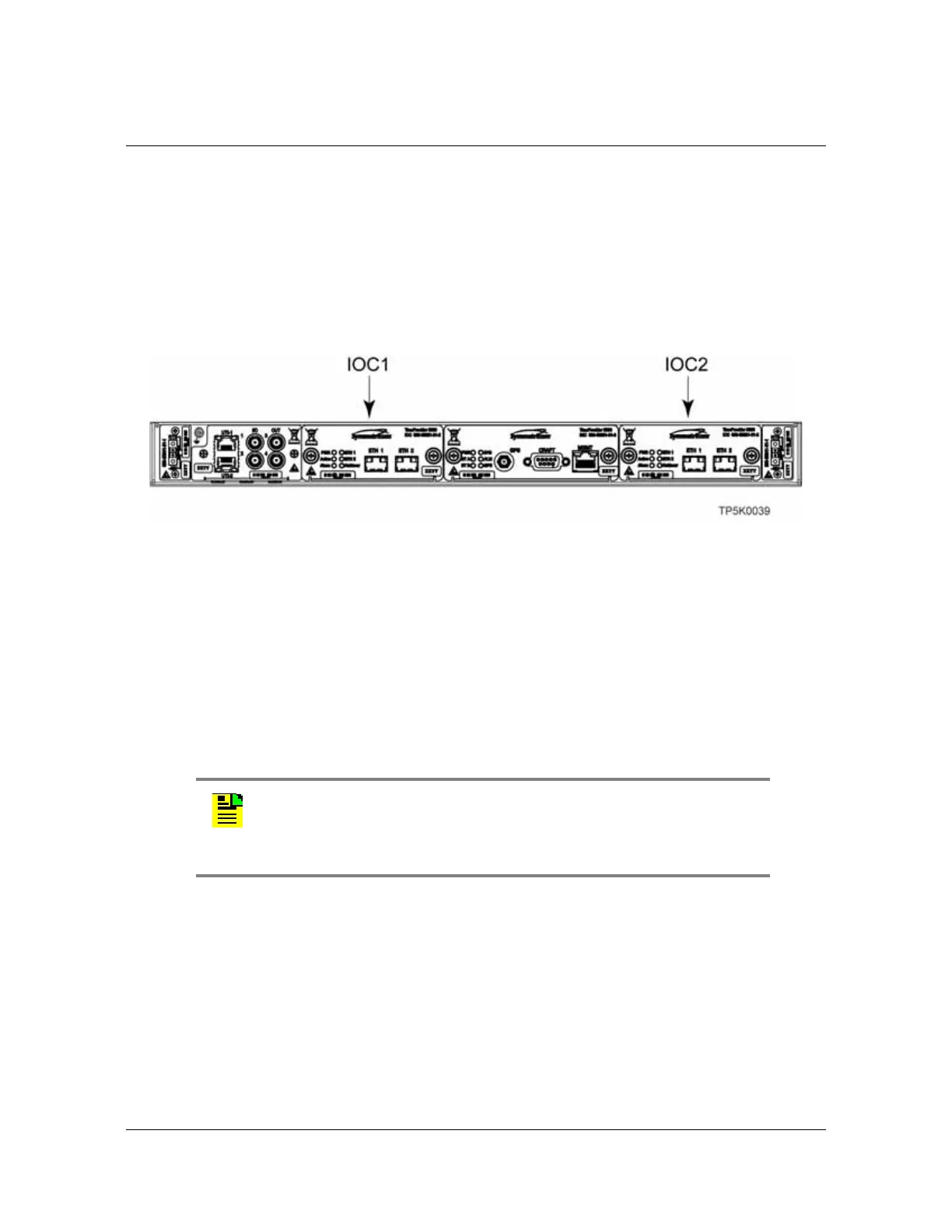362 TimeProvider 5000 User’s Guide 098-00028-000 Revision F – May, 2012
Chapter 5 Operating
Switching Active And Standby IOC Cards
Switching Active And Standby IOC Cards
Active and standby IOC cards may be switched automatically or manually. See
Appendix D, Redundant IOC Cards for additional details.
Manually Switching IOC Cards
Use the “set ioc-state” command to switch the standby IOC module to become the
active module. IOC1 refers the
IOC module to the left of the IMC and IOC2 refers to
the
IOC module to the right of the IMC, as shown in Figure 5-1 below..
Figure 5-1. IOC1 and IOC2 Modules
Example:
If IOC1 is the active card, IOC2 is the standby card. This example demonstrates switching
IOC2 to be the active card, then using the “show ioc-state” command to verify the switch.
tp5000> set ioc-state ioc2 active
tp5000> show ioc-state
Automatic IOC Card Switches
The active card continually assesses its own health level compared with the health
level of the standby card. If the active card should become unhealthier than the
standby card, then a switch will occur. See Causes of Switchovers Between IOC
Cards, on page 485.
Note: Switchover to the standby IOC will be prohibited if the
standby IOC has alarms of higher severity than the active IOC
or if the standby IOC is still in warm-up. Check system status
and alarms if the command fails.

